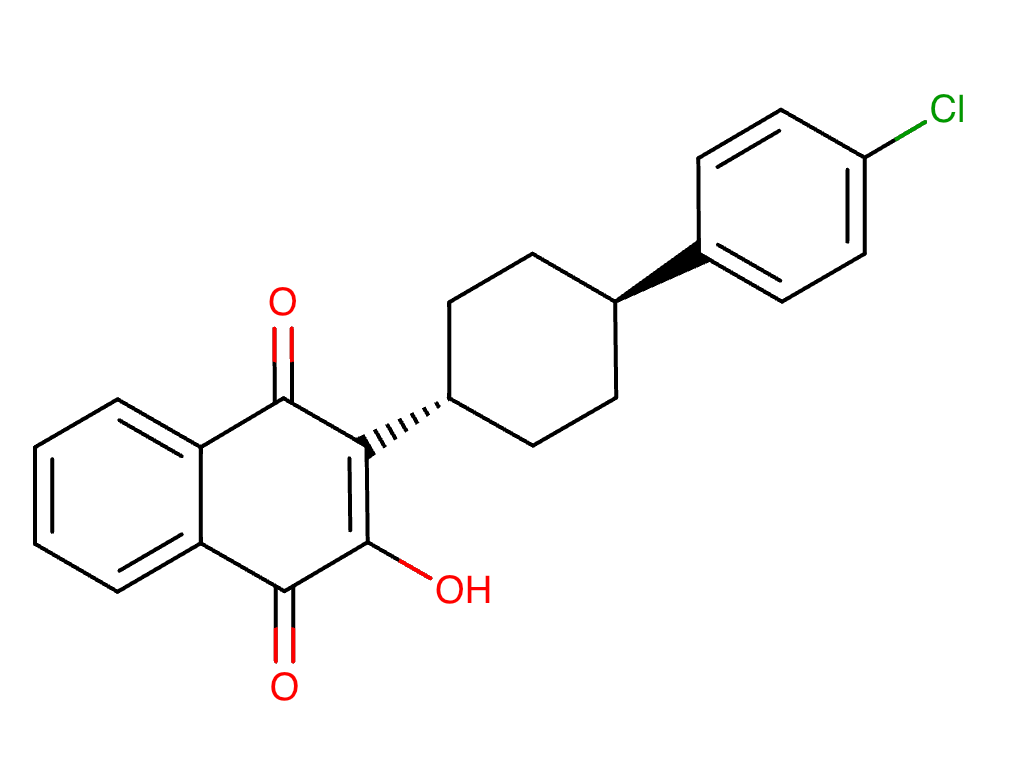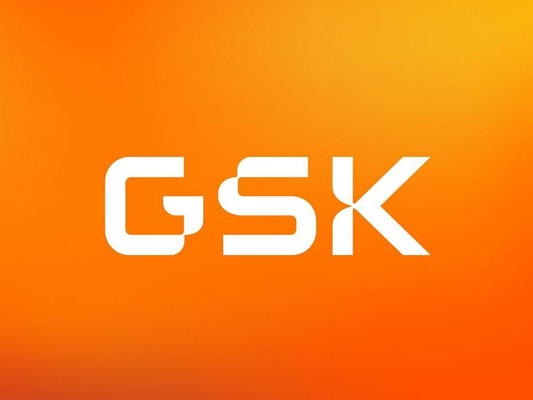
Drug name
Atovaquone
Developer(s)
Drug information
Not provided
Atovaquone
Mepron
Small molecule
Atovaquone is a broad spectrum antiparasitic drug utilised for the treatment and prevention of malaria. As a structural mimic of coenzyme Q (also known as ubiquinone), atovaquone functions by selectively binding the malarial cytochrome b protein resulting in the disruption of both the parasite’s transmitochondrial membrane potential and pyrimidine biosynthesis. Atovaquone is often synergistically combined with proguanil to avoid the possibility of emerging drug-resistance in erythrocytic P. falciparum. However, recent research has suggested that mosquitoes are unable to transmit atovaquone-resistant P. falciparum, indicating the potential viability of atovaquone monotherapy for malaria chemoprophylaxis. Long-acting injectable versions of atovaquone are currently in preclinical development.
Unknown
Unknown
Therapeutic area(s)
- Malaria
- Pre-Exposure Prophylaxis (PrEP)
- Treatment
Administration route
Oral, Intramuscular
Associated long-acting platforms
Aqueous drug particle suspension
Use of drug
- Administered by a nurse
- Administered by a specialty health worker
Not provided
Not provided
Dosage
Not provided
Not provided
Not provided
Not provided
Not provided
Comment & Information
Developer(s)

GSK (formerly GlaxoSmithKline) is a British-based global biopharmaceutical company that manufactures therapeutic medicines and vaccines across four core areas including oncology, respiratory/immunology, HIV and infectious diseases. Founded in 2000 following a merger between Glaxo Wellcome and SmithKline Beecham, GSK are currently moving their global headquarters from Brentford to central London.
Various generic manufacturersDrug structure
Scale-up and manufacturing prospects
Long-acting versions of atovaquone are currently in pre-clinical development. Atovaquone’s physiochemical properties including its low systemic clearance and high hydrophobicity make it a suitable candidate for long-acting injectable (LAI) formulation. Development approaches for solid-drug nanoparticle formulations focus on attrition methods or require the generation of drug-associated nano-carriers. However, an alternative approach may instead utilise emulsion-templated freeze drying screening to identify high drug content solid-drug particles prior to scale-up by emulsion spray drying.
Not provided
Researchers as part of the LONGEVITY project have developed a preclinical LAI solid-drug nanoparticle (SDN) atovaquone formulation for intramuscular admin. Initially, a library of SDNs containing atovaquone in combination with surfactant and polymer stabiliser excipients was generated, creating a range of formulations composing of 80% atovaquone, 13% polymer and 7% surfactant using FDA-approved inactive ingredients. Formulations were retained if they met the following criteria: (1) SDN average diameter <1000nm, (2) full aqueous dispersion at 0.5 mg/ml, (3) uniformity of size and drug release.
Dynamic light-scattering analysis equipment (e.g. using Malvern Zetasizer Nano ZS) to measure the Z-average diameter of solid drug nanoparticles to assess formulation stability.
Excipients
Not provided
Not provided
Not provided
Delivery device(s)
No delivery device
Atovaquone compound
Not provided
US5053432
Compound
BURROUGHS WELLCOME CO
Not provided
April 14, 2003
expired
Publications
Bakshi, R.P., Tatham, L., Savage, A.C. et al. Long-acting injectable atovaquone nanomedicines for malaria prophylaxis. Nat Commun 9, 315 (2018). https://doi.org/10.1038/s41467-017-02603-z
Chemoprophylaxis is currently the best available prevention from malaria, but its efficacy is compromised by non-adherence to medication. Here we develop a long-acting injectable formulation of atovaquone solid drug nanoparticles that confers long-lived prophylaxis against Plasmodium berghei ANKA malaria in C57BL/6 mice. Protection is obtained at plasma concentrations above 200 ng ml-1 and is causal, attributable to drug activity against liver stage parasites. Parasites that appear after subtherapeutic doses remain atovaquone-sensitive. Pharmacokinetic–pharmacodynamic analysis indicates protection can translate to humans at clinically achievable and safe drug concentrations, potentially offering protection for at least 1 month after a single administration. These findings support the use of long-acting injectable formulations as a new approach for malaria prophylaxis in travellers and for malaria control in the field.
Balta, V.A., Stiffler, D., Sayeed, A. et al. Clinically relevant atovaquone-resistant human malaria parasites fail to transmit by mosquito. Nat Commun 14, 6415 (2023). https://doi.org/10.1038/s41467-023-42030-x
Long-acting injectable medications, such as atovaquone, offer the prospect of a “chemical vaccine” for malaria, combining drug efficacy with vaccine durability. However, selection and transmission of drug-resistant parasites is of concern. Laboratory studies have indicated that atovaquone resistance disadvantages parasites in mosquitoes, but lack of data on clinically relevant Plasmodium falciparum has hampered integration of these variable findings into drug development decisions. Here we generate atovaquone-resistant parasites that differ from wild type parent by only a Y268S mutation in cytochrome b, a modification associated with atovaquone treatment failure in humans. Relative to wild type, Y268S parasites evidence multiple defects, most marked in their development in mosquitoes, whether from Southeast Asia (Anopheles stephensi) or Africa (An. gambiae). Growth of asexual Y268S P. falciparum in human red cells is impaired, but parasite loss in the mosquito is progressive, from reduced gametocyte exflagellation, to smaller number and size of oocysts, and finally to absence of sporozoites. The Y268S mutant fails to transmit from mosquitoes to mice engrafted with human liver cells and erythrocytes. The severe-to-lethal fitness cost of clinically relevant atovaquone resistance to P. falciparum in the mosquito substantially lessens the likelihood of its transmission in the field.
Additional documents
No documents were uploaded
Useful links
Collaborate for development
Consider on a case by case basis, collaborating on developing long acting products with potential significant public health impact, especially for low- and middle-income countries (LMICs), utilising the referred to long-acting technology
Share technical information for match-making assessment
Provide necessary technical information to a potential partner, under confidentiality agreement, to enable preliminary assessment of whether specific medicines of public health importance in LMICs might be compatible with the referred to long-acting technology to achieve a public health benefit
Work with MPP to expand access in LMICs
In the event that a product using the referred to long-acting technology is successfully developed, the technology IP holder(s) will work with the Medicines Patent Pool towards putting in place the most appropriate strategy for timely and affordable access in low and middle-income countries, including through licensing